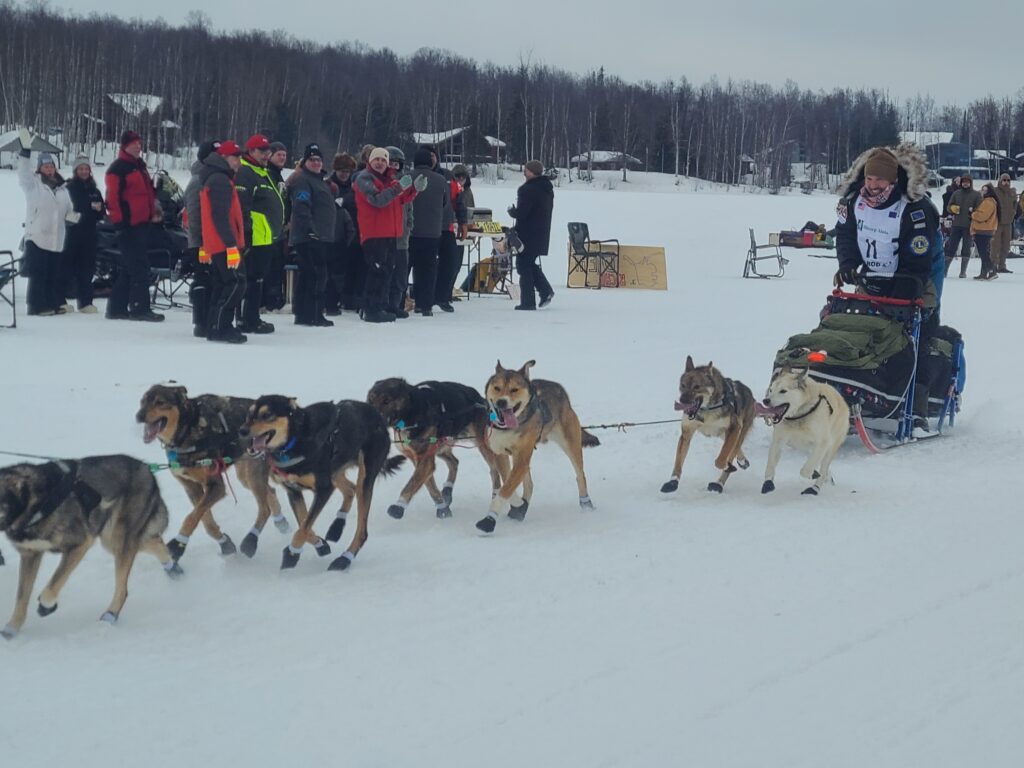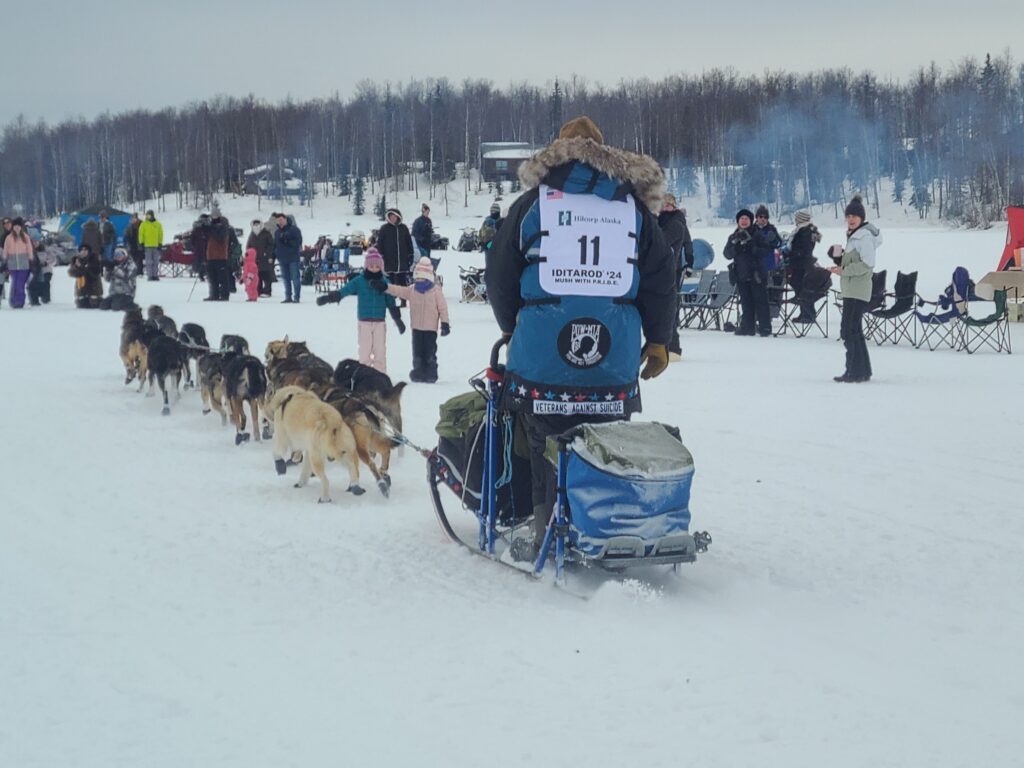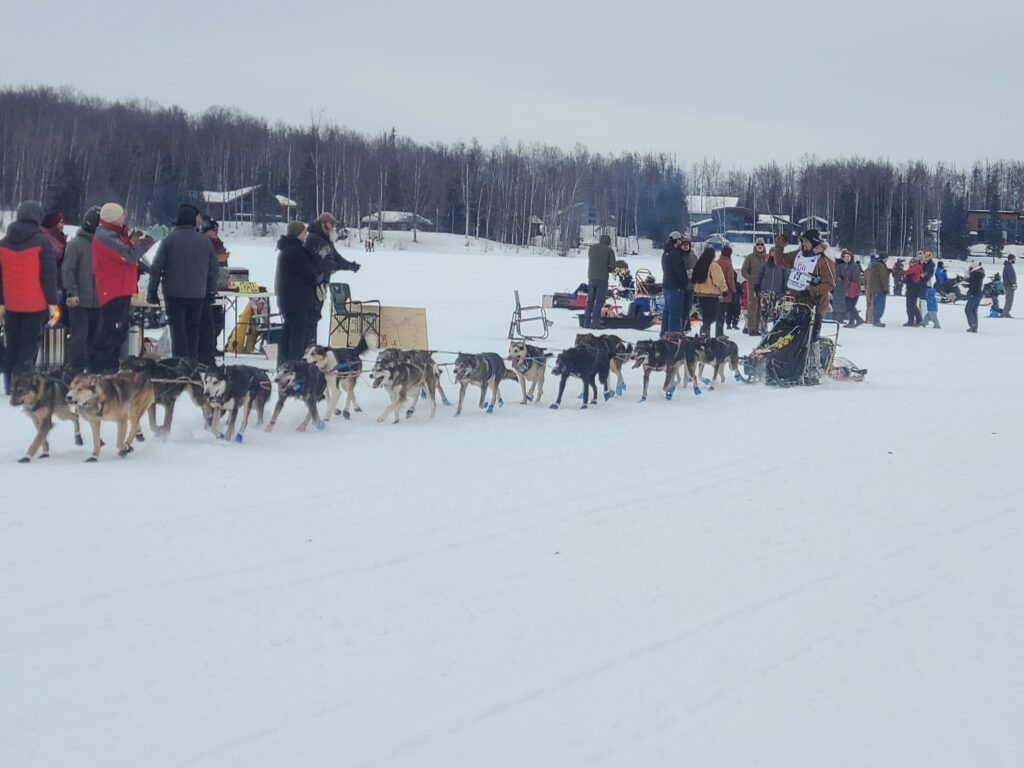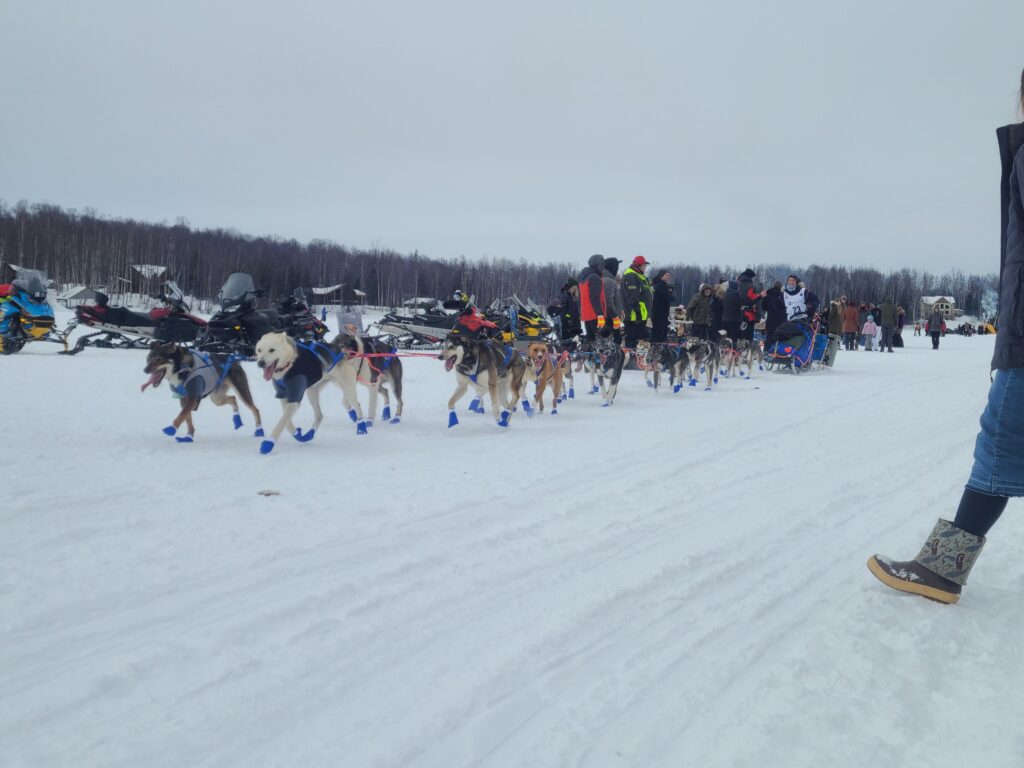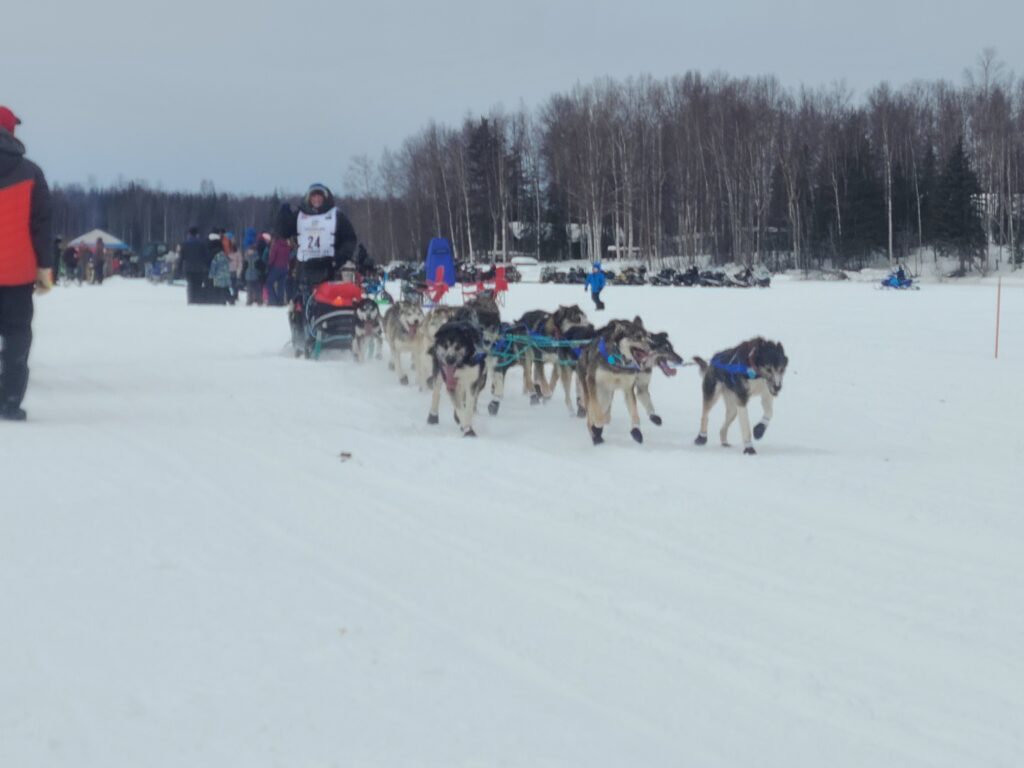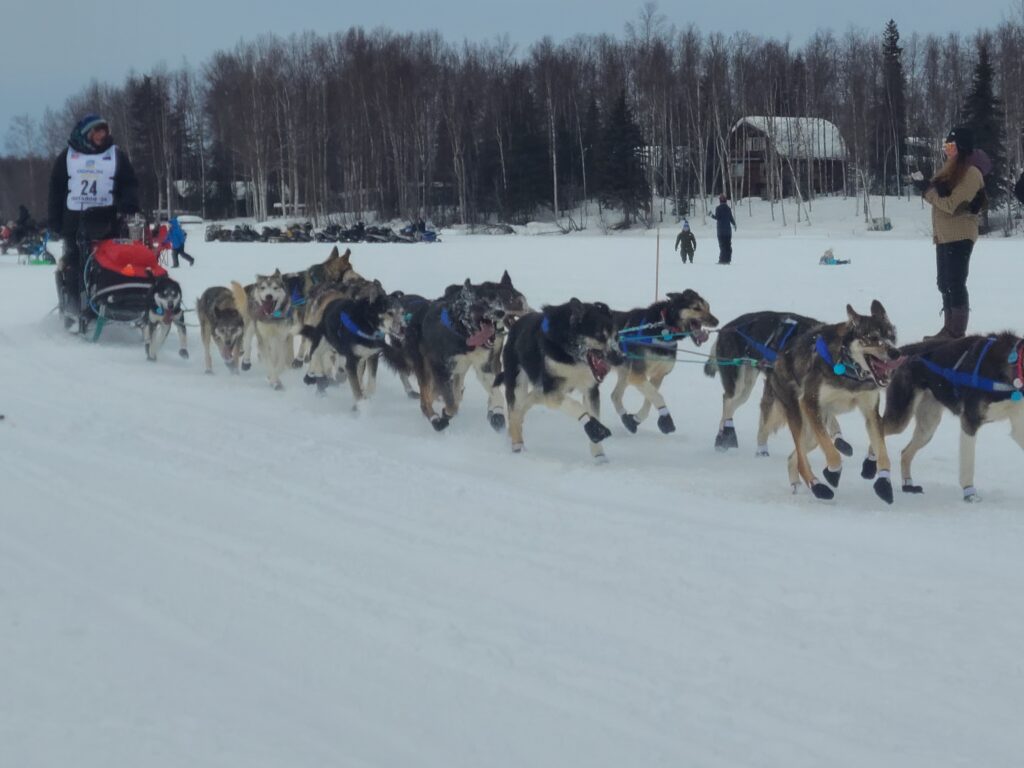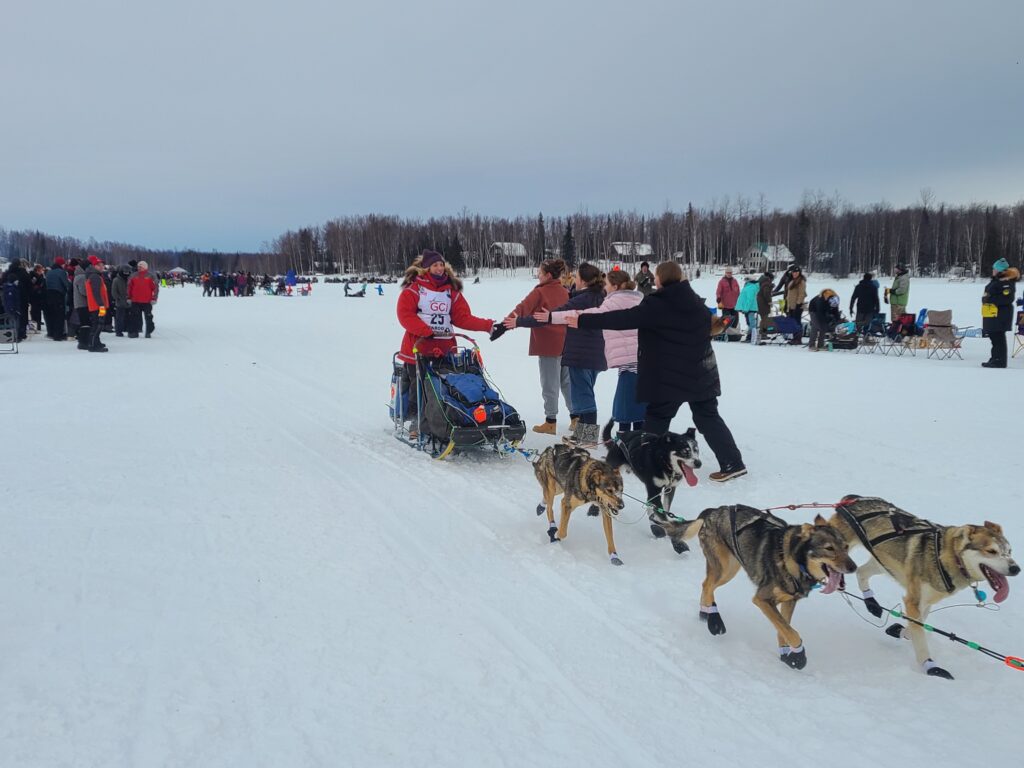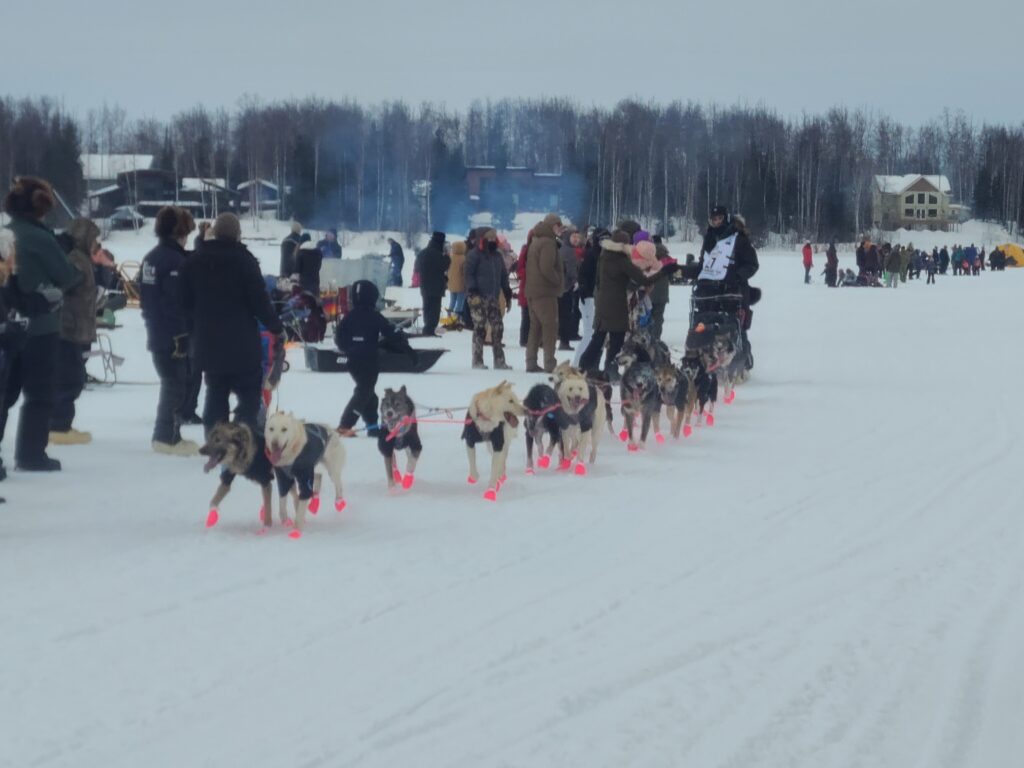Iditarod Restart 2024

The Short Version of the History of the Iditarod
The story of the Iditarod actually started many years ago in 1925. in January 1925 the children of Nome were dying after getting infected with diphtheria. The epidemic put the entire village of 1,400 at risk. A quarantine was ordered, but only an antitoxin serum could stop the fast-spreading disease. The nearest life-saving medicine was more than 1,000 miles away in Anchorage. There were no roads going to Nome then and contrary to today’s popular belief by people in the Lower 48 there are still no roads going there today. This was well before any modern-day transportation was invented. Sea transport was impossible, and open-cockpit airplanes of the era could not fly in Alaska’s subzero temperatures. Trains were not an option either so canine power was Nome’s only hope.
Sled dogs had been used to make deliveries on Alaska’s snowy trails, so the best mushers and dog teams were recruited to hastily transport the serum to Nome. On the night of January 27, 1925, a train delivered the serum, wrapped in fur, to the end of the railway where the sled dog team relay to Nome began. This was about a 700-mile “Great Race of Mercy” through Alaska’s rugged wilderness, across frozen rivers and over the tundra. Five days later the serum arrived in Nome saving many lives.
The Iditarod
Today the Iditarod commemorates this life saving serum relay race and follows much of the original route to Nome. There are many checkpoints along the way to keep everyone and the dogs as safe as possible, unlike in 1925 when several dogs died making the journey. There are several other dog sled races in Alaska, however the Iditarod is the best know of them thanks in part to its history. The Iditarod is also the world’s longest sled dog race at about 1,000 miles. The route travels from Willow to Nome and varies slightly every year. Mushers and a team of 12-16 dogs travel the route in usually 8 – 10 days. The Iditarod began in 1973 as an actual racing event to test the best sled dog teams and has slowly grown each year to the highly competitive and world-famous race it is today.
There are mushers and dog teams that come from all over the world to compete. Teams often race through blizzards, sub-zero temperatures, gale-force winds, temps reaching -75 and lower with wind chill factored in. The trail runs from Willow up the Rainy Pass of the Alaska Range into the wilderness interior, and then along the shore of the Bering Sea, reaching Nome in western Alaska. The trail is through a rugged landscape of tundra and spruce forests, over hills and mountain passes, across rivers and even over sea ice, also most of the route passes through sparsely populated towns and villages, and small Native Athabaskan and Iñupiat settlements.
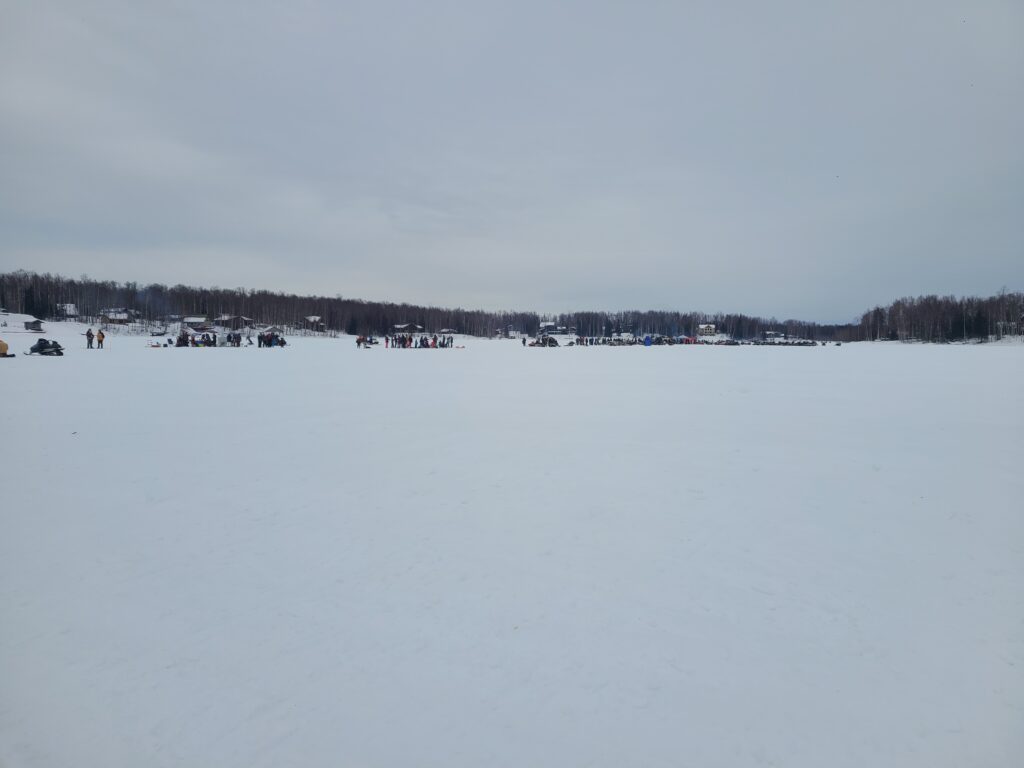

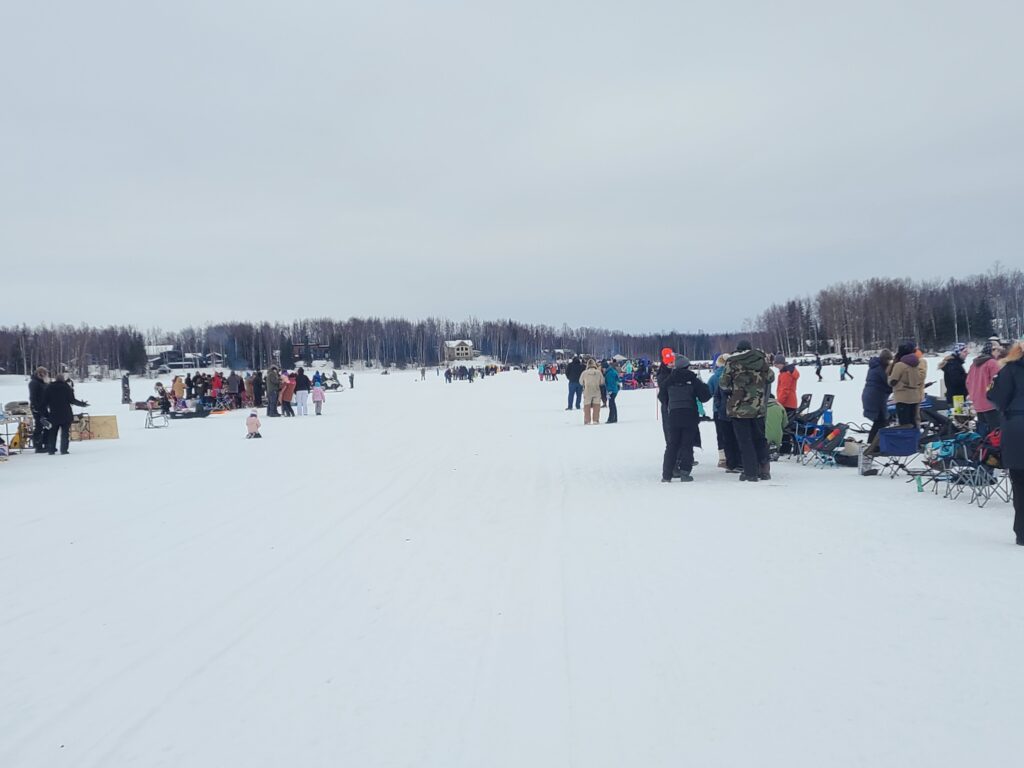

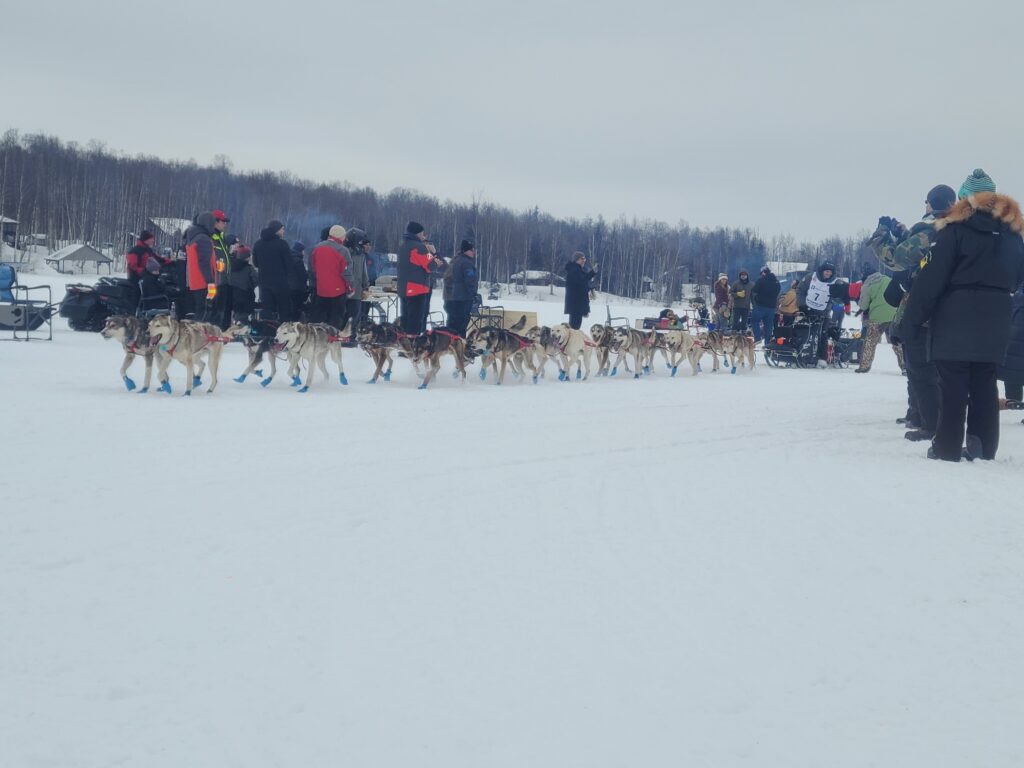






The Locations
The “Ceremonial Start” location is in Anchorage and is about an eleven-mile route. The “Iditarod Official Restart” is the following day in Willow and that is where the trail to Nome begins. A lot of people come into town for the Restart so plan on getting there early if you want to be near the official start line or anywhere near it. Fortunately for us we live in Willow so we go to less crowded areas along the sled dog trail, so we don’t have to find parking or fight the crowds. All the pictures here are along the sled dog trail itself and not at the Restart, but it’s close enough for us. Everyone lines the trail and many people high-five the mushers as they pass by, unlike in the city where the route is fenced off. The kids and I had fun cheering the teams on as they passed by. We were rooting for Josh Robbins (#11 in these pictures) who started Outreach 22 to help veterans suicide awareness and prevention. We have several friends working on the local fire and rescue teams that keep the mushers safe. There are so many support volunteers behind the scenes. We wish safe travel for all the teams, dogs, and support personnel who keep this event organized and safe.

